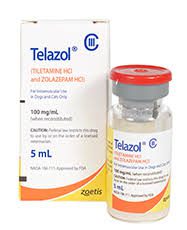Codeine
$210.00 – $600.00

Codeine is use To treat your moderate and severe pain.
Buy Codeine
Description. click Here to join our Telegram
Codeine is a weak narcotic pain-reliever and cough suppressant similar to morphine and hydrocodone. In fact, a small amount of codeine is converted to morphine in the body. The precise mechanism of action of codeine is not known; however, like morphine, codeine binds to receptors in the brain (opioid receptors) that are important for transmitting the sensation of pain throughout the body and brain.
Purchased codeine
Promethazine increases tolerance to pain, decreasing discomfort, but the pain still is apparent to the patient. In addition to reducing pain, Promethazine also causes sedation drowsiness and depresses breathing. Promethazine frequently is combined with acetaminophen (Tylenol) or aspirin for more effective pain relief. Buy Codeine Online.
Promethazine is a medication that belongs to the class of drugs known as opioids. It is derived from the opium poppy plant and has been used for centuries for its analgesic (pain-relieving) properties. In this article, we will explore codeine in detail, discussing its uses, mechanism of action, dosage, side effects, precautions, and potential risks.

Uses of Codeine:
Codeine is primarily used for the management of mild to moderate pain. It is commonly prescribed for conditions such as headaches, dental pain, postoperative pain, and musculoskeletal pain. Codeine is often combined with other medications, such as acetaminophen or ibuprofen, to enhance its analgesic effects.
Codeine for sale
Promethazine is also used as a cough suppressant. It can help reduce coughing by acting on the cough center in the brain. However, its effectiveness in this regard is limited, and other medications may be more suitable for treating persistent or severe coughing.
Mechanism of Action:
Promethazine works by binding to opioid receptors in the central nervous system, including the brain and spinal cord. Upon binding, it modulates the perception of pain and produces analgesia. Codeine also has antitussive (cough-suppressing) effects by acting on the cough center in the brainstem.
Order codeine
Promethazine undergoes metabolism in the liver to morphine, which is the active form responsible for its analgesic effects. However, the conversion of codeine to morphine varies among individuals due to genetic factors, resulting in different levels of pain relief.
Dosage and Administration:
The dosage of codeine varies depending on the individual’s age, weight, severity of pain, and medical condition. It is crucial to follow the prescribed dosage and administration instructions provided by a healthcare professional.
Promethazine is available in various formulations, including tablets, capsules, and syrups. The usual starting dose for adults is 15 to 60 mg every four to six hours as needed for pain relief. The maximum daily dose is generally limited to 360 mg. However, dosing may vary depending on the specific product and the individual’s response to the medication.
For cough suppression, the usual dosage for adults is 10 to 20 mg every four to six hours as needed. However, codeine should be used cautiously for cough suppression in children due to the risk of respiratory depression.
Side Effects and Precautions:
Like other opioids, Promethazine can cause a range of side effects. Common side effects may include:
1. Drowsiness and sedation
2. Nausea and vomiting
3. Constipation
4. Dry mouth
5. Dizziness
6. Headache
These side effects are usually mild and transient, but if they persist or worsen, medical attention should be sought. Constipation, in particular, can be managed with lifestyle modifications and the use of stool softeners or laxatives if necessary.
Promethazine carries certain precautions and risks that should be taken into account. It has the potential for abuse and dependence, and prolonged use can lead to physical and psychological dependence. Individuals with a history of substance abuse or addiction should be closely monitored when using Promethazine.
Promethazine should be used with caution in certain populations, including the elderly, individuals with impaired liver or kidney function, and those with respiratory disorders. It can cause respiratory depression, especially when taken in high doses or combined with other central nervous system depressants, such as alcohol or benzodiazepines.
Additionally, Promethazine should be used with caution in breastfeeding mothers and pregnant women. It can pass into breast milk and may cause respiratory depression or other adverse effects in nursing infants. Pregnant women should consult with their healthcare provider regarding the risks and benefits of using codeine during pregnancy.
Risks and Considerations:
Promethazine carries certain risks that should be considered. It is a controlled substance in many countries due to its potential for abuse and addiction. Misuse or abuse of codeine can lead to serious health consequences, including overdose and even death.
It is important to use Promethazine only as prescribed and to store it in a secure place to prevent unauthorized use or access. If a dose is missed, it should be taken as soon as remembered, unless it is close to the next scheduled dose. Double doses should not be taken to make up for a missed dose.
Promethazine should not be abruptly discontinued, especially after prolonged use, as it can lead to withdrawal symptoms. These symptoms may include restlessness, anxiety, muscle aches, insomnia, and flu-like symptoms. Tapering off the medication under medical supervision is recommended to minimize the risk of withdrawal symptoms.
Conclusion:
Promethazine opioid medication commonly used for the management of mild to moderate pain and as a cough suppressant. It binds to opioid receptors in the central nervous system, providing analgesia and cough suppression.
While Promethazine can be effective in relieving pain and suppressing cough, it should be used under the guidance of a healthcare professional. The medication carries risks of side effects, dependence, and withdrawal symptoms.
It is important to follow the prescribed dosage and to be aware of potential interactions with other medications or substances, such as alcohol. Misuse or abuse of codeine can lead to serious health consequences, and it is important to store the medication securely and use it only as prescribed.
If you have any concerns or questions about codeine, it is best to consult with a healthcare professional who can provide personalized advice and guidance based on your specific situation. They can help determine if Promethazine is the right medication for your condition and can monitor your usage to ensure your safety and well-being.

Discover Codeine Online
(STORAGE)
Promethazine should be stored between 15 to 30 C (59 to 86 F).
PRESCRIBED FOR: Codeine is used for the relief of mild to moderately severe pain and for suppressing cough.
DOSING: The usual adult dose of codeine is 15-60 mg every 4-6 hours.
DRUG INTERACTIONS:
Promethazine can impair thinking and physical abilities required for driving or operating machinery. Alcohol and other sedatives such as alprazolam (Xanax) can produce further brain impairment and even confusion when combined with Promethazine. Therefore, alcohol and other sedatives should be limited when taking codeine.
PREGNANCY:
Safety during pregnancy has not been established. Promethazine is generally avoided in pregnancy because it may cause fetal physical dependence, withdrawal and growth retardation.
SIDE EFFECTS
The most frequent side effects of Promethazine include lightheadedness, dizziness, nausea, vomiting, shortness of breath, and sedation. Other side effects include allergic reactions, constipation, abdominal pain, rash, and itching.
Promethazine is habit-forming. Mental and physical dependence can occur but are unlikely when used for short-term pain relief. If codeine is suddenly withdrawn after prolonged use, symptoms of withdrawal may develop. The dose of Promethazine should be reduced gradually in order to avoid withdrawal symptoms.
| Choose Quantity | 60 tablet – $3.50 /tablet,, 90 tablet – $3.00 /tablet,, 120 tablet – $2.50/tablet,, 180 tablet – $2.25 /tablet,, 300 tablets – $2.00 /tablet |
|---|
Reviews
There are no reviews yet.
Related products
PAIN MEDICATION
PAIN MEDICATION
PAIN MEDICATION
PAIN MEDICATION
PAIN MEDICATION
Depression
PAIN MEDICATION
PAIN MEDICATION













Be the first to review “Codeine”